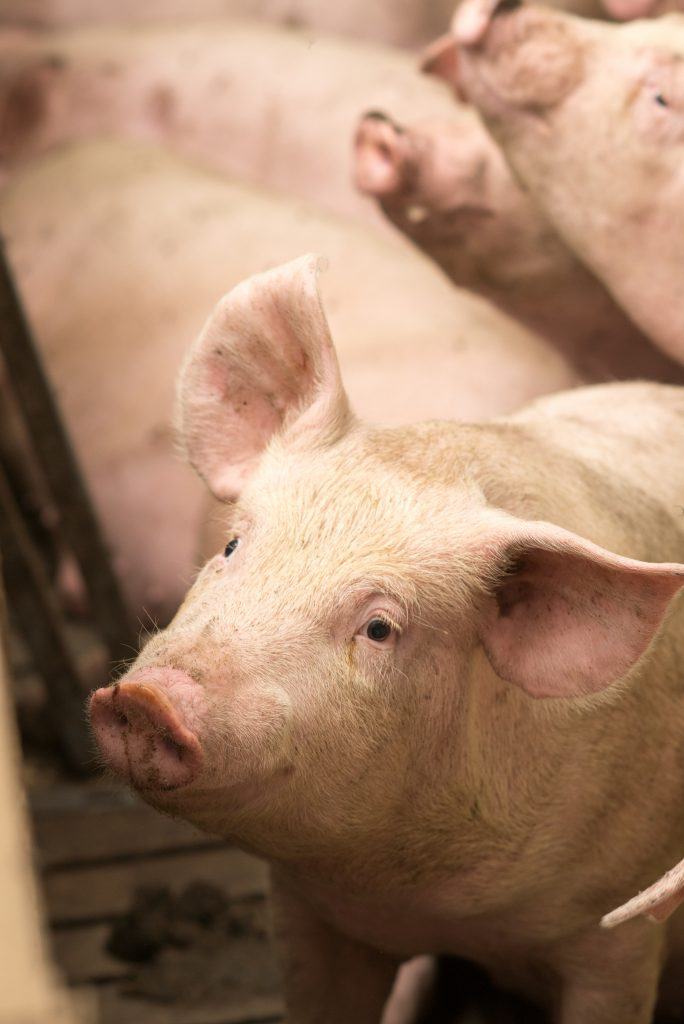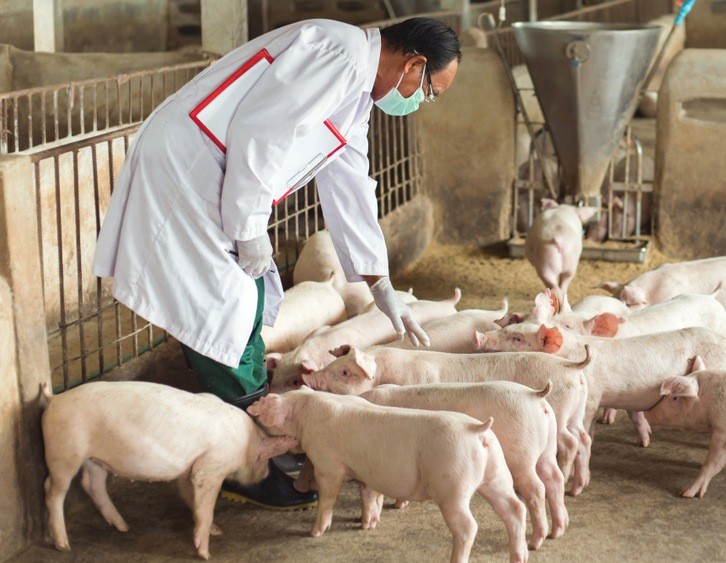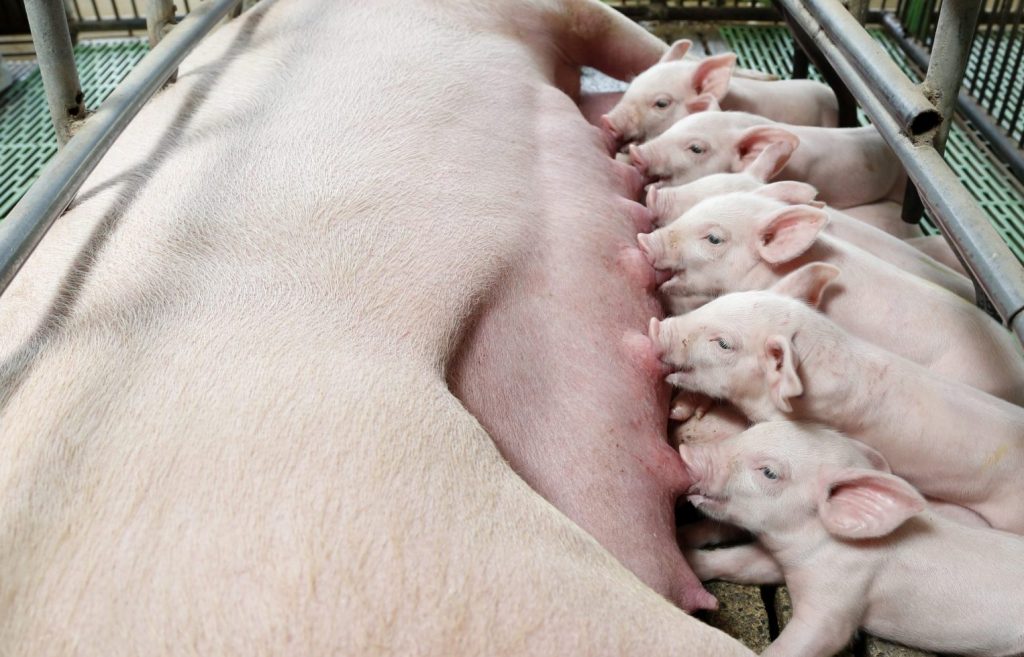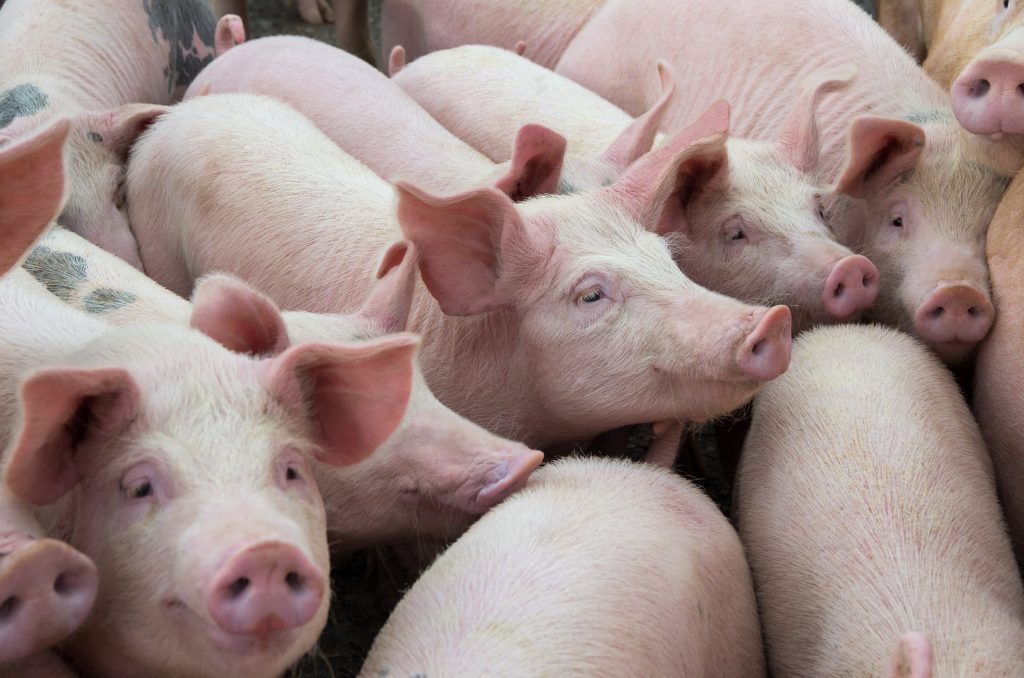Species
Pigs
Natural additives for efficient pig breeding

Pork production
A growing market worldwide
With a short cycle and high zootechnical efficiency, pork production (like poultry production) is growing worldwide. The 3 main production regions correspond to the 3 main consumption areas: China, Europe and North America. Since 2018, global production has been disrupted by African Swine Fever (ASF), which is raging in Asia (particularly in China, where an estimated one-third of its pig herd has been lost over two years), Eastern Europe and more recently in Central Europe. In 2021, the world pig herd will represent 750 million animals, of which approximately 350 million in China and 150 million in Europe.
Pork consumption reached 120 million tons of carcass equivalent (tce) in the world in 2020. However, pork consumption is not evenly distributed in the world. While pork represents 32.7% of the meat consumed in 2020 (compared to 38.6% in 2010), consumption is tending to increase, particularly in Southeast Asia and Latin America. In 2027, it is estimated that pork consumption will reach 127 million tce.
Enjeux
- 1 Antibiotic
resistance - 2 The rise in the
price of feed - 3 Performance
- 4The environment
Dealing with
Antibiotic resistance
Health, whether for consumers or animals, is often at the heart of concerns. The ASF, for example, has raised awareness about the importance of biosecurity in animal husbandry and the good hygiene practices to ensure the safety of livestocks. This same biosecurity is also crucial when it comes to antibiotic resistance.
Indeed, humans, animals and the environment are all three linked in the same ecosystem and it is essential to reduce the use of antibiotics in order to decrease the development of resistant bacterial strains. It is in this sense, for example, that in 2006 the European Union banned the use of growth-promoting antibiotics in animal feed, followed today by a large majority of countries around the world. This has led to a rethinking of animal husbandry with more attention to hygiene, nutrition and farm practices.
Parallel solutions to maintain the intestinal flora such as the use of copper or zinc in high doses are also tending to disappear in favour of more natural and beneficial solutions for the animals such as prebiotics.

Compensate the rise in the
Price of feed
Recently, we have seen that the volatility of raw material prices can have a considerable impact on pork production. As 60-70% of the costs in pig farming depend on the cost of feed, the slightest variation can tip the balance in one direction or the other. While the cheapest feed rarely leads to the best feed cost per kg of pork produced, it is important to find ways to reduce feed costs as much as possible. Gut health as well as improving feed efficiency are key points to master. This can be achieved by providing good quality feed and water, supporting intestinal development during the growth phase or using solutions to stimulate the development of a healthy microbiota.

Sow and piglets
Performance
Both the reproductive performance of the sows and the growth performance of the pigs have improved significantly. Recent genetic lines are hyperprolific and fast growing. Breeding management and nutrition must now allow them to express this potential. On the other hand, the intense metabolic activity of such animals raises the oxidative stress to a penalizing level. Nutritional solutions such as antioxidants can compensate it and allow the full expression of the potential of these animals.

A safe environment for a
Healthy livestock
Finally, the environment has also been a path to progress for pork production for several decades now. Air and soil pollution linked to various discharges, especially nitrogenous, is often pointed out. Numerous solutions now exist to reduce these emissions as much as possible through state-of-the-art equipment in buildings or through input management, especially feed. The interest is twofold, on the one hand, the reduction of the environmental footprint of livestock and on the other hand, the improvement of conditions within the livestocks themselves, in particular through the reduction of harmful gas emissions (e.g. ammonia).


Nutrition to face the
Challenges in swine production
In conclusion, while the problems mentioned are diverse, they nevertheless concern pig farming as a whole, with different priorities in different regions of the world. Pork production is therefore in constant evolution, it must constantly adapt to meet the emerging requirements, where nutrition is often one of the keys to the solution.







